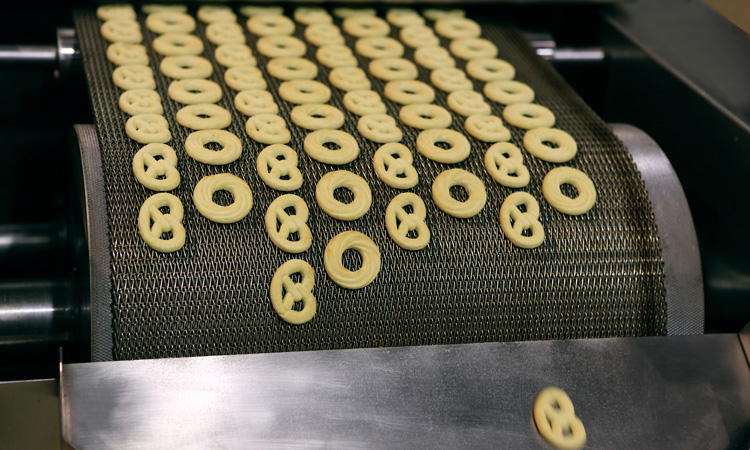Trending now: food grade lubricants
- Like
- Digg
- Del
- Tumblr
- VKontakte
- Buffer
- Love This
- Odnoklassniki
- Meneame
- Blogger
- Amazon
- Yahoo Mail
- Gmail
- AOL
- Newsvine
- HackerNews
- Evernote
- MySpace
- Mail.ru
- Viadeo
- Line
- Comments
- Yummly
- SMS
- Viber
- Telegram
- Subscribe
- Skype
- Facebook Messenger
- Kakao
- LiveJournal
- Yammer
- Edgar
- Fintel
- Mix
- Instapaper
- Copy Link
Posted: 11 December 2019 | Orsi Dézsi | 1 comment
Orsi Dézsi, Business Unit Manager of Nonfood Compounds & Food Contact Materials at NSF International, explores some of the trends in the food grade lubricants arena as manufacturers look to reduce risk.


For food/beverage producers, the word ‘recall’ is one they would obviously prefer to avoid. In some cases, recalls can be traced back to the lubricants used in equipment at food/beverage manufacturing plants. Incidental contact can occur between the food/beverage and lubricants during the production process. The issue is, was that lubricant independently verified for incidental contact? Verification provides peace of mind that incidental contact won’t adversely affect the food or beverage, and lowers the risk of a recall.
Another trend with food-grade lubricants has been the innovation in formulations
The main types of lubricants used in food/beverage manufacturing are H1 and H2. Food-grade H1 lubricants are permissible for incidental food contact by the US Food and Drug Administration (FDA) if the minimum amount needed to accomplish the technical effect on the equipment was in fact the amount used. In comparison, industrial-grade H2 lubricants are verified to be free of intentionally-added heavy metals, carcinogens, mutagens and more. They must be used in closed systems where there is no potential for contact with the food/beverage.
Making the (food) grade
An increasing number of lubricant manufacturers are upgrading their H2 lubricants to H1 lubricants. Even though H2 lubricants are meant to stay ‘below the line’ during production, occurrences of cross-contamination, incidental contact and misreading of labels do happen. To help food/beverage producers minimise food safety risks – and avoid potential recalls – lubricant suppliers have changed their H2 formulations so that they meet 21 CFR 178.3570 and can now be technically classified as H1. In other words, it is possible for lubricants to meet the formular requirements of H1 and the performance expectations of products used in closed systems.
Formula makeover
Another trend with food-grade lubricants has been the innovation in formulations. With a steady stream of new chemicals being introduced and used by formulators, ingredient limitations needed to be updated. A big concern was if 21 CFR allowed/adjusted for ingredients not found in 175.3570. That is why manufacturers are increasingly seeking out food contact notifications (FCNs) directly from the FDA. FCNs are the FDA’s way of introducing new chemistries into the regulation; however, FCNs are proprietary to the manufacturer and not intended for finished materials.
International regulations
At the international level, an increasing number of H1 registrations are upgrading to ISO 21469 certifications. This requires a facility-based, validated risk assessment and annual production facility audit that verifies formulations and hygienic manufacturing processes. It is not surprising that lubricant manufacturers are looking to upgrade. ISO 21469 certification opens new doors globally to the pharmaceutical, animal feed, cosmetics and tobacco industries.
Verification provides peace of mind that incidental contact won’t adversely affect the food or beverage, and lowers the risk of a recall
Lubricant lessons
The science behind lubricants is not the only thing evolving. Those that make the lubricants have now taken on the dual role of supplier and educator, i.e. they are helping food/beverage processors understand how to properly use their products.
Education needs to be more than a good intention. Improper usage of lubricants causes most plant stoppages and equipment failures. Lubricant suppliers should embrace this teaching moment to protect the business interests of their clients while elevating their own credibility and trustworthiness.
Going forward
At food/beverage plants everywhere, reputations of companies are on the line every day. In addition to the threat of recalls, there are also the ever-increasing demands of new technology, production capacity and consumers. The leading lubricant suppliers that grease the machinery of the industry are adapting, innovating and educating to stay relevant and competitive.
About the author
Orsi Dézsi is the Business Unit Manager at NSF International for nonfood compounds and food contact material services. For the past 15 years, Orsi has worked closely with the regulatory community, industry stakeholders and clients to navigate the evolving global regulatory landscape in both material and chemical regulations.
Related topics
Food Grade Lubricants, Food Safety, Health & Nutrition, Outbreaks & product recalls, Quality analysis & quality control (QA/QC)










We still believe only in vegetable based lubricant and releasing agents. Even for the use in steel band ovens.
Kindest regards Sven Grote